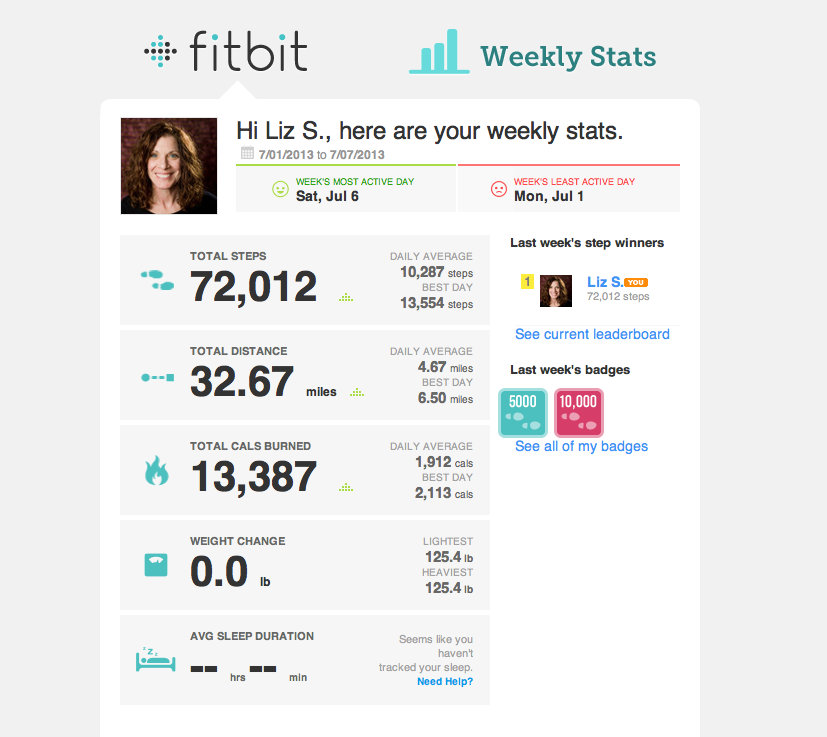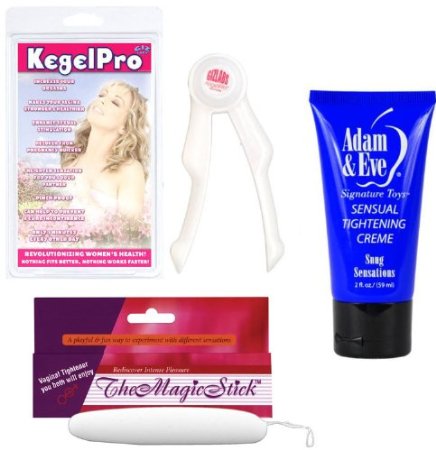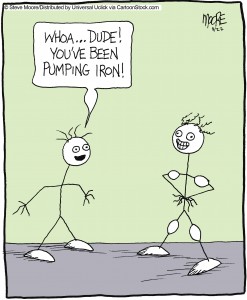Wednesday Bubble: My Fitbit Flex
I have been meaning to share my experiences with the fitbit flex every since it arrived in my mail two months ago. Fortunately, a FaceBook thread debating the merits of wearable mobile health devices prompted me to finally sit down and gather my thoughts. True confession: this my personal opinion and nothing more.
The fitbit flex. Pretty nifty, right? However, anyone who knows me well will want to know why I purchased one in the first place; after all, I hardly need motivation to go to the gym or get on my bike.
Weight gain. That’s right, weight gain (disregard the number below – it’s not reflective of what I am referring to). And while a few pounds is hardly cause for concern, those of you in the midlife set will understand that some of the changes that take place in our bodies don’t always bode so well. Hence, I decided to take charge, contacted an RD to discuss my eating patterns and decided to monitor my activity a little more closely. The rub? The flex doesn’t really monitor one’s activity very well.
In fact, if you are not upright, it may not monitor your activity at all. That takes a bit more motivation to take the time to input your activity, time spent doing the activity, etc, time that might be better spent actually doing more of that activity.
If you look at my numbers over the past week, they look pretty good:
However, this is what they don’t show:
- Hours spent on the recumbent bike: 5
- Hours rowing: 2
- Hours gardening: 2
- Hours spent doing housework: 3
They also don’t account for the fact that the battery ran out of juice a few times and I had to take the flex off for a recharge.
Moreover, after the first week, I stopped monitoring my sleep. It didn’t appear to be very accurate. And calories consumed or burned? Fuhgeddaboutit! If the band is not accurately reflecting my activity and I am not inputting any information about the food I’m eating, it’s hard to accurately determine how many calories I am burning, right?
Is there anything that I like about the flex?
It’s lightweight and I usually forget that I’m wearing it. That’s a lovely feature. I think it’s cool and although the weekly reports are not quite right, it’s still nice to know that I have daily goal — 10,000 steps — that I am trying to reach if not surpass. However, as a tool to effectively monitor what I am doing and how I’m doing? The flex gets about a 3 out of 10 in my book. I want easy, accurate and intuitive. I want a device that thinks for me and not the other way around. Clearly, when you only spend $99 you are getting a Nissan and not an Infiniti. But, if you are going to drop the dollars in the first place, shouldn’t you know what you are buying?
Admittedly, I ordered the flex before it became available. As an early adopter, I guess that I got what I paid for: no guarantee.
On the flip side. I know that anecdotally, those of my friends who have difficulty motivating themselves to move more have been inspired by the flex and other mobile health devices. Moreover, data from one study demonstrated that users of a smartphone monitoring application were likelier to both log steps regularly and had a greater odds of exceeding the designated 10,000 step goal per entry. Less clear, however, was whether or not these changes in behavior would take hold permanently or were simply an anomaly of the shiny new object syndrome.
Already, I find myself losing interest in the flex and will likely abandon it over time. I find that I am no longer motivated to log in the extras that the flex can’t record. An hour with my personal trainer would have likely been a better use of my money.
What about you? Do you have a flex or some other device? What do you like about it or dislike about it? Are you more or less motivated now that you have a device or will it end up in the land of lost tech toys?
Inquiring minds…
[Disclosure – Fitbit did not approach me with a suggestion to purchase a flex or write a review. The words, thoughts and opinions expressed are solely mine without bias or intevention.]
Read MoreMale or female – when it comes to working out, silence is golden
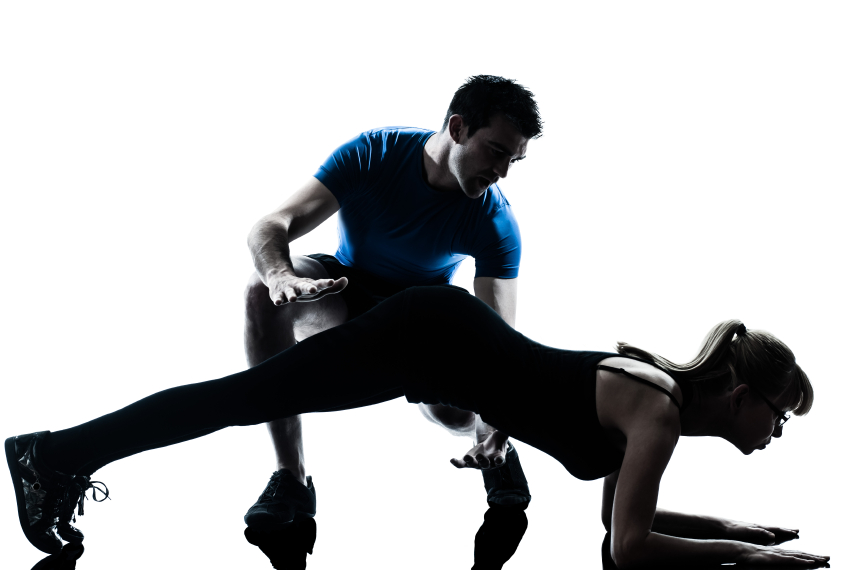 Silence is golden, at least it is when it comes to choosing your workout partner.
Silence is golden, at least it is when it comes to choosing your workout partner.
I write a lot about the importance of physical activity and this seemed to be the perfect post to kick off Women’s Health Week.
Data have suggested that an optimal workout partner can actually improve both the intensity and duration of exercise by as much as 208%. Indeed, according to Brendan Irwin, an assistant professor of kinesiology at Kansas State University, having a skilled workout partner who keeps verbal encouragement to a minimum is the key to optimizing workouts. Hmm, a skilled person. This idea builds upon behavioral research theory that suggests that the presence of a superior partner may improve motivation in the ‘weak link,’ especially when both people are on a team together. But in addition to the weak link-superior workout partner theory (which I find especially fascinating) is that I would expect that encouragement would be a motivator, not a detractor.
Irwin and his colleagues at Michigan State University asked 115 male and female students (on average, 20 years old) to perform a series of five abdominal planks (holding each as long as they could) after watching a brief instructional video. For those unfamiliar with planks, they are body-weight resistance exercises in which one ‘suspends’ his or her body weight using abdominal muscles. Generally, planks are isometric, require little coordination and are effort-based. They are also quite difficult to hold for any significant period of time. (My best time, for example, is 1 min 40 seconds and my worse, 15 seconds.) For a ‘variation on a theme,’ the differences between the five planks were subtle, e.g. holding a push up position on one’s forearms on each side, etc. Next, the students were divided into three groups:
- The first rested for 10 minutes.
- The second group were told that they would be exercising with a partner (on video at another location) who they met briefly via a Skype call (in reality, that person was ‘in on the research’ and the exercise portion of the session had been pre-recorded). They were informed that the partner was slightly better (skill wise) than themselves.
- The third group was told that they would be exercising with a partner who would encourage them (and, due to technical difficulties, only the partner would be able to communicate).
Irwin says that at first, he and his colleagues thought that it made the most sense that encouragement from a workout partner would be motivating. However, what they found was the opposite: “when exercising with someone who is slightly better [i.e. about 40%] and who is not verbally encouraging, participants exercised longer than if the conditions were the same but that person was verbally encouraging them.” That is, even after controlling for individual differences in strength, exercising with a partner who was more skilled boosted persistence by an average of 78%, and the optimal partner – more skilled and who kept the rah-rahs to a minimum translated into a longer bouts of exercise. Perception is key; Irwin explained that those people who received encouragement from a more skilled partner may have interpreted the comments as condescending or patronizing.
However, will this hypothesis work on older individuals as well? When I asked Professor Irwin this question directly, he said that to the best of his knowledge, ” there is no empirical reason to believe that the results of this study wouldn’t apply to a wide range of age groups. In fact, anecdotally, I hear from faculty and middle-age folks all the time who read about this study (and others like it) and are quick to validate that a partner can be very motivating for them (e.g., “I play tennis with a friend who is a little better than me and it really gets me going!”).”
What about you? What type of person motivates you the best to surpass your own expectations?
[Professor Irwin’s study — “You Can Do It: the Efficacy of Encouragement in Motivating the Weak Link to Exercise Longer During an Online Exercise Video Game,” is slated for publication in the Journal of Medical Interent Research]
Read More
Household work..the key to better sleep?
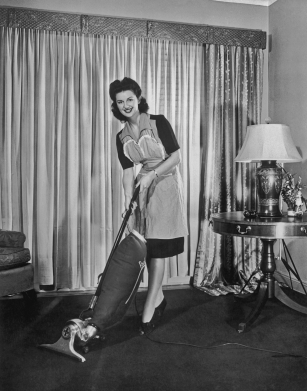 Have I got your attention yet?!
Have I got your attention yet?!
It’s no surprise that hot flashes and night sweats rank among the most important factors when it comes to poor sleep. However. less clear are the factors that may provide a buffer against the flashes. And aside from the usual suspects e.g., crankiness and moodiness or the inability to focus, poor sleep has been linked to heart disease and obesity, among other less desirable health conditions.
So, what can you do?
I’ve written about the benefits of physical activity and amelioration of menopausal symptoms many times on Flashfree. And, I imagine I will continue to do so. But what about sleep? There is evidence that physical activity can help bolster both sleep quality and sleep quantity. Yet, few people have examined the domino effect, i.e. fewer hot flashes ← physical activity → better sleep. Moreover, even fewer have considered the benefits of non-leisure physical activity, like housework.
Now, before you accuse me of setting women back 60 or 70 years, let’s consider exactly what I am suggesting.
According to research, women participate in less leisure time physical activity but greater levels of household physical activity than their male peers. This is apparently truer among ethnicities other than Caucasian (especially African American), who also tend to have greater levels of obesity and poorer sleep characteristics. So, it would follow that by increasing both, women might fare better in the sleep department, right?
In fact, when researchers took a small group of women participating in the larger SWAN study and evaluated their self-reported and scientifically measured sleep patterns for four nights, that is exactly what they found. The group, which was comprised of both White and African-American women, reported having flashes or sweats, were between the ages of 54 and 63, had an intact uterus and were not on medications that could affect hormone levels or symptoms. And while the number of women was quite small (only 52), they fit into the full spectrum of BMI targets (from normal to obese to overweight). In addition to sleep patterns, they also shared details of their most common daily physical activity (how often, how long and how intense) and household/caregiving responsibilities (time spent caregiving, preparing/cleaning up after meals, and routine chores as well the intensity of these activities).
Not surprisingly, women who had greater levels of leisure physical activity were 8 times more likely to report that their sleep quality was better than their less active peers. And, women who reported greater household, non-leisure physical activity awakened fewer times during the night, but only if their BMI levels were lower. Yet, the benefits were mostly seen more among White women. Even more troubling is that the researchers say that they could not determine the ‘why’ of these findings, even though they conducted several different types of analyses and comparisons.
The good news is that for some women, engaging in greater levels of household physical activity and leisure physical may reduce sleep disturbances, especially if they are not overweight. For others, especially my African-American sisters, the mystery remains. African-American women often report more severe hot flashes than their White peers. And while experts have pointed fingers towards rates of obesity or distinctions in estrogen levels or smoking history, the reasons remain unclear.
Meanwhile, while I am not necessarily suggesting that you increase your household responsibilities, I do believe that even with the limitations of this study, more physical activity may beget better sleep and possibly fewer or less severe hot flashes. Finally? Can we please find some effective and viable strategies for women of colour? Although the menopause experience may vary by ethnicity, as women, we need to find solutions that work for most of us, not some of us.
Read MoreWednesday Bubble: Don’t just do kegels, do them like a pro!
I swear, I don’t mean to take a mick out of Kegel exercises; they have proven invaluable for regaining pelvic floor strength following pregnancy, disease and even in the case of stress incontinence. And yet, when I see a product like KegelPro, I simply can’t help myself.
KegelPro reminds of Suzanne Somer’s Thighmaster, a nifty product designed to reduce thigh size. Not surprisingly, the Thighmaster was marketed by the same guy who developed the Mood Ring (remember those)? But I digress.
KegelPro is being co-marketed in an exercise bundle an Amazon — not only do you get a nifty device that looks like a plastic speculum — but, it comes with the Magic Stick Vaginal Tightener, Adam & Eve Vaginal Tightening Lube & an After Sex Towel. Seriously, you can’t make this up. 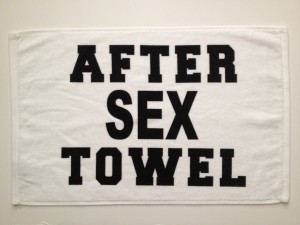
And the product description is even better:
“Exercise your way to make your vagina stronger and healthier. By using the Kegel Pro, you will enhance sexual stimulation, recover from pregnancy quicker and heighten sensations for you and your partner. All you have to do is concentrate on squeezing the muscles around the inserted Kegel Pro. Such an easy way to increase your orgasms! Works like magic! The Magic Stick is a vaginal tightening stick that helps to shrink the vaginal wall giving both partners a sensational feeling. With simple instruction for use and care, you will find this stick truly magical. Rediscover intense pleasure! Enjoy a fuller love life with Adam & Eve Sensual Tightening Creme! Use this vaginal tightening cream to increase chances of orgasm during sex, enhance your sexual performance, and grip every inch of your partner. Simply apply a liberal amount to your desired area. Squeeze tube with flip-top lid holds 2 oz. of creme. Get snug sensations tonight!”
By the way, KegelPro sells for $42. The package? $85. The product reviews? Priceless! Evidently this ‘Pharmaceutical grade piece of plastic’ is truly a novelty item. No wonder they threw the After Sex Towel into the deal.
Ladies – take Kegels seriously. The KegelPro? Bursting this bubble, even if it comes with a tamp…er, Magic Stick!
Read More
Newsflash! Lose the fat. Then break the fast!
I’m kicking this week off with a piece of provocative news: UK researchers are reporting that the best way to win the battle of the bulge and lose fat is to exercise on an empty stomach.
Mind you, the study (which appears in the online in the British Journal of Nutrition) is small. But, researchers say that by omitting breakfast before exercise, you might be more inclined to eat a more optimal balance of food throughout the day. In fact, when twelve physically active men participated in one of four scenarios — rest without breakfast, exercise without breakfast, breakfast followed by rest, or breakfast followed by exercise –that is actually what they found.
A bit of detail is in order here:
Men who exercised had a moderately intense run on a treadmill, during which time they expended approximately 700 calories. (Note that for the men assigned rest, an equivalent time was spent resting as on the treadmill). After exercising or resting, all the groups had a protein drink comprising approximately 444 calories. Ninety minutes later, they had lunch (pasta) and advised to eat as much as they wanted until they felt comfortably full. Then, the researchers measured energy and fat levels in the blood.
Interestingly, exercising in the morning (around 10 am) appeared to help balance out the day in terms of food and no attempts appeared to be made to compensate for the earlier activity in terms of caloric intake; appetite was also unaffected. But, here’s the critical piece: exercising in a fasted state appeared to increase the amount of fat burned by as much as 20%. And, while eating breakfast appeared to improve overall appetite throughout the day (helping to insure that it remained more balanced and did not lead to additional consumption), it tended to cancel out any appetite-suppressive benefits offered by exercise.
The bottom line is that by fasting before exercising, you may be able to accelerate fat loss. The question remains as to whether or not the same results can found in women and among larger numbers of individuals. And if these fat loss remains over time.
I’d love to hear from some RDs and fitness folks out there. What do you think?
Read More
You don’t need ripped; you just need to get it right
There are some days when growing older simply feels like a big old pain in the butt. Despite the wrinkles, grey hairs and even sags in places we didn’t know could sag, there are important steps you can take to keep some parts of the aging process at bay, such as a loss of muscle. And while many of us stay strapping until about the age of 40, after that time there is evidently a progressive decline in muscle, leading to eventual weakness, slowing of movement and even disability. Have you ever observed an elderly person trying to rise from a chair or climb the stairs? It’s tough to watch, right?
Fortunately, researchers say that there are a few steps that you can take to slow the process and protect what you have, even if you are past the age of 40. Mind you, the rate at which muscles age can vary widely between individuals and genetics do play a role. In fact, genetics may be responsible for more than half of muscle variance and this variance is evidently is driven by your mother’s genes; not only is her longevity predictive of how long you might live but it also affects muscle size and strength as you grow older.
Not surprisingly, hormones also play a role. Darn, that estrogen keeps rearing her ugly head! Indeed, it appears that not only do declines in estrogen impact skeletal muscle structure but also function, robbing women of the much needed ability to keep muscles tense when they need to be.
Still, researchers say that there are still opportunities to modify the trend.
- Nutrition is important. You’ve heard the caloric restriction can prolong life, right? But it’s not without risk and researchers say that lower food intake can lead to reduced nutrient intake, which actually boosts systemic inflammation, a culprit in muscle loss as well as a host of other illnesses. But supplementing with antioxidants, incorporating omega-3s into the diet and focusing on amino acid, leucine rich foods, such as cottage cheese, egg whites, low-fat beef, fish, chicken, lentils and soybeans (all of which provide ample protein) may hep to reduce inflammation, improve muscle function (namely the functioning of muscle fibers) and boost muscle size.
- Physical activity is key! Exercise actually reduces low-grade systemic inflammation that plagues our bodies as we age. And, it directly benefits skeletal muscle by helping to maintain the function of muscle fibers, attenuate the loss of muscle units and help reduce the loss of cells that are important for muscle regeneration. Regular exercise may also help the body to oxygenate muscles and tissues, another factor that declines with aging.
Listen up! Keeping muscles strong and healthy doesn’t mean that you need ripped. However, what it does mean is that you need to get it right. Exercise your brain on this one, make sure that you are getting proper nutrition and move your body. And start now; not when you are sitting in that chair struggling to get up.
Read More






